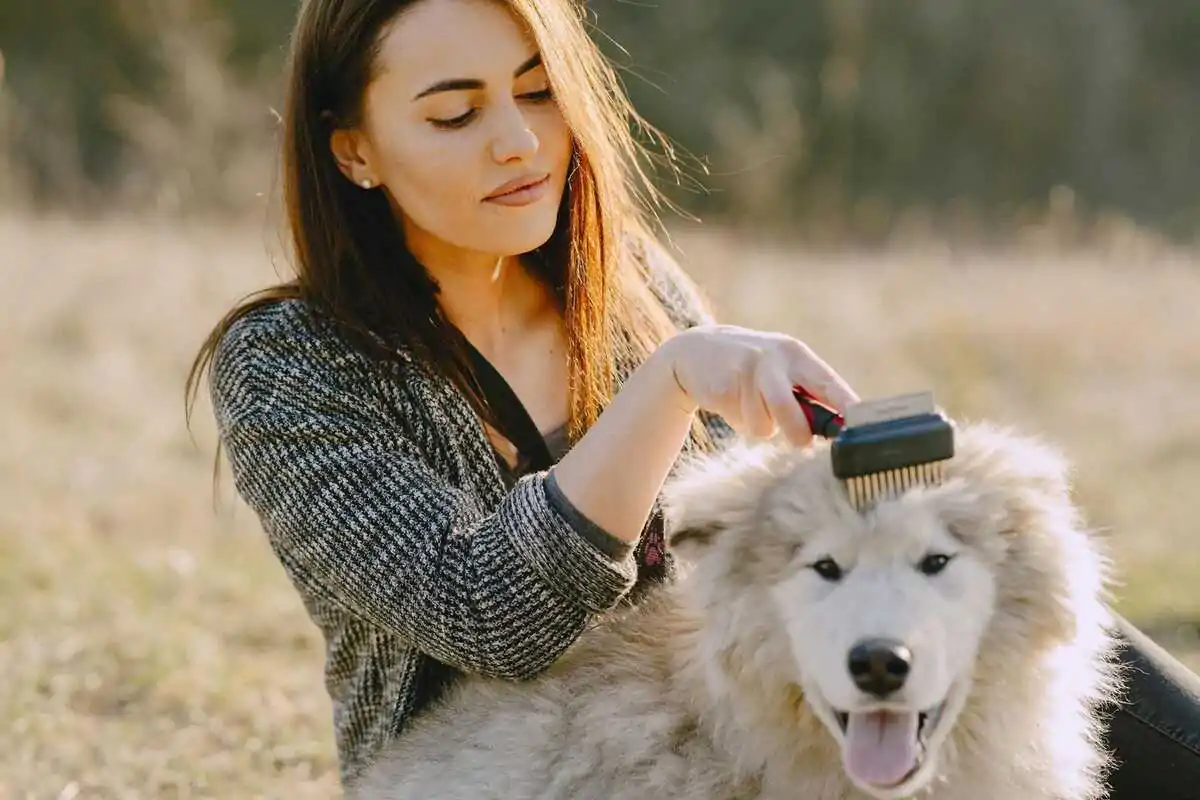

Shedding is a natural and essential process for dogs, but it can pose significant challenges for pet owners. Most dog breeds will shed throughout the year, but some breeds have blowouts once or twice, resulting in a “shedding season” that can cover an entire household in fur.
Dealing with this seasonal apocalypse is daunting for many pet owners, with some simply giving up on cleaning altogether. This isn’t good for you or your pet, as that much stray fur and dander can affect your home’s air quality. Let’s take a look at how you can handle the shedding season.
Shedding in dogs is primarily influenced by daylight, which means it often increases in spring and fall. However, indoor dogs might shed more uniformly throughout the year due to artificial lighting and temperature control.
Breeds with double coats, like Huskies and German Shepherds, experience more intense seasonal shedding, while breeds with continuously growing hair, like Poodles, shed less visibly.
Regular brushing is the most effective way to manage shedding. For double-coated breeds, use an undercoat rake to remove loose fur from the underlayer. Breeds with more extended hair benefit from slicker brushes or combs that prevent mats and tangles.
While over-bathing can strip essential oils from a dog’s skin, occasional baths with a shedding-control shampoo can help loosen and remove dead hair.
Some breeds may require professional grooming to properly manage their coats, especially those with complex coat types like Doodles or Bichon Frises.
Diet plays a crucial role in the health of a dog’s coat. Omega-3 and Omega-6 fatty acids, found in fish oil and flaxseed oil, can improve coat quality and reduce shedding. High-quality dog food that meets your dog’s nutritional needs should also be top in your puppy’s checklist. Be wary of over-supplementation, as this can lead to health issues.
Managing a home during your dog’s shedding season requires a proactive and systematic approach. It’s possible to keep your living space clean and comfortable if you consider the following factors.
A good vacuum cleaner, preferably with a HEPA filter, is indispensable. Look for models specifically designed for pet hair, as they often have more potent suction and specialized attachments to remove hair from upholstery and tight spaces.
Develop a vacuuming routine that focuses on areas where your dog spends most of their time. It’s not just about the frequency of vacuuming but also about being strategic – targeting places like dog beds, favorite resting spots, and high-traffic areas.
Lint rollers are a quick solution for removing pet hair from clothing and furniture. For larger surfaces, consider using a squeegee or a damp rubber glove to gather pet hair.
These devices can be particularly beneficial in managing pet dander and hair in the air. An air purifier with a HEPA filter can capture airborne pet allergens, improving the air quality in your home.
One of the best ways to reduce the amount of pet hair in your home is to groom your pet regularly. The more hair you can remove during grooming sessions, the less hair will end up around your home.
Regularly wash your dog’s bedding, blankets, and any washable throw rugs. Hot water and a good detergent can do wonders in removing pet hair and dander.
Consider having your air ducts cleaned if you have central heating and air conditioning. This can remove accumulated pet hair and dander from the ductwork and prevent it from circulating through your home.
After vacuuming, use a slightly damp mop on hard floors to pick up any residual pet hair. This is especially effective on hardwood, tile, or laminate flooring.
For non-washable furniture, regular use of a vacuum’s upholstery attachment can be effective. For deeper cleans, consider steam cleaning or using upholstery-safe pet hair removal products.
Designate specific areas of the home as pet-free zones. This can help limit the spread of pet hair and dander to areas like bedrooms, where it can be exceptionally bothersome.
By integrating these tips into your regular cleaning routine, you can significantly reduce the impact of shedding on your home environment, creating a cleaner, healthier space for both you and your pet.
Fact: Shaving can harm the dog’s coat and skin, especially in double-coated breeds. It does not stop shedding and can disrupt natural temperature regulation.
Fact: All dogs shed, regardless of coat length. Short-haired breeds can shed just as much, if not more, than their long-haired counterparts.
Fact: While it can help, over-bathing can lead to skin irritation and coat damage, worsening shedding issues.
Pet owners can handle shedding season effectively with the right approach, ensuring the well-being of both their dogs and their homes. It does take some effort, but there’s no need to give up, even if it seems like your dog is a never-ending stream of fur. Take our tips into consideration, and you’ll soon find that you’ll be breathing easier.
Read also: Sweeping into Shape: The Dual Benefits of House Cleaning as Exercise
S.how you can write a wonderful research paper Direct contador de palavras reference annotation, about…
Some online casinos have no deposit casinos, but offer players the chance to play for…
Keyless Repeaters | Buy auto key repeaters, jammers, code-grabbers, relay attack unit box or other…
Students need not fight with all the article services to compose a great one. There…
Is it really safe to purchase from a college paper writing service? While many claim…
What Is a PayPal Business Account? Any PayPal Business account is a digital payment solution…